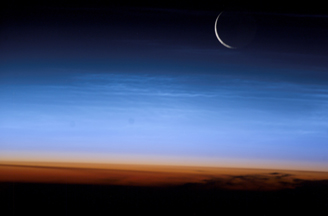
Geotimes Home | AGI Home | Information Services | Geoscience Education | Public Policy | Programs | Publications | Careers

 Our planet
is warming. The years 2002 to 2004 are the second, third and fourth warmest years
since 1861 (1998 remains the warmest) and nine of the last 10 years (1995 to 2004)
— the exception being 1996 — are among the 10 warmest years. Based on
reconstructions of temperatures from proxy data, such as tree rings and ice cores,
several studies have also concluded that northern hemisphere surface temperatures
are warmer now than at any time in at least the last 1,000 years.
Our planet
is warming. The years 2002 to 2004 are the second, third and fourth warmest years
since 1861 (1998 remains the warmest) and nine of the last 10 years (1995 to 2004)
— the exception being 1996 — are among the 10 warmest years. Based on
reconstructions of temperatures from proxy data, such as tree rings and ice cores,
several studies have also concluded that northern hemisphere surface temperatures
are warmer now than at any time in at least the last 1,000 years. | The number of daily warm extremes has increased, while the number of cold extremes has decreased, especially at night. |
 |
Geotimes Home | AGI Home | Information Services | Geoscience Education | Public Policy | Programs | Publications | Careers |